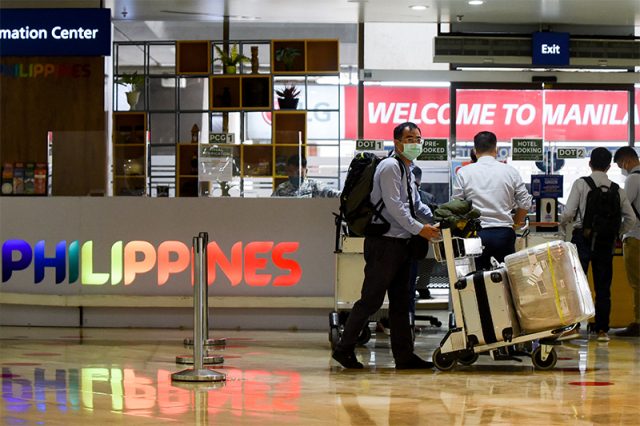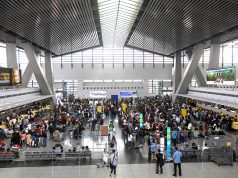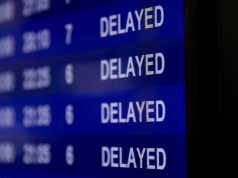
The Philippines saw air travel accidents and woes in the past that are similar to the fiasco on New Year’s Day, January 1.
Sen. Nancy Binay, who chairs the Senate Committee on Tourism, recalled these incidents in response to the sudden power supply issue that put the entire Philippine airspace into an abrupt no-fly zone on Sunday morning.
The country’s air navigation system went back up and resumed normal operations later that night.
Airport and transport authorities cited a “technical issue”, a “glitch” and a “power outage” that caused the air traffic crisis.
RELATED: ‘We’d be happy to participate’: Tycoon Pangilinan offers help after NAIA crisis | NAIA going private? Timing of air traffic system glitch raises questions
Binay, however, perceived the situation as “scary and terrifying”.
“Una sa lahat, buti na lamang at walang nangyaring anumang aksidente…but what happened last Sunday is scary and terrifying, and anyone who has plans of traveling to the Philippines this year may have second thoughts about visiting,” the lawmaker said.
She also expressed dismay that this is not the first time a serious aviation-related problem happened in the country.
Binay made emphasis on the inconvenience to travelers and losses to tourism and businesses because of such mishaps.
“Imagine, several hours of inconvenience and unproductive waiting for passengers… inconvenience to PWDs and senior citizens, losses to tourism and business. This is not the first time that this occurred—there were similar incidents that happened in 2016 and 2018,” she said.
“Our airports, being critical facilities, should have a reliable backup system to handle these kinds of extraordinary and emergency situations. What happened on Sunday clearly demonstrates how vulnerable we are, and with either a hardware or software glitch, we can all be crippled,” she added.
Binay did not specify the “incidents” she was referring to in her statement.
Aviation-related accidents and problems, however, have plagued the country’s air transportation over the years.
Here are three recent cases that caused trouble to many passengers in local airports.
Rundown of air traffic woes in recent years
On Oct. 23, 2022, a plane from Korean Air overshot the runway at the Cebu International Airport after it tried to land two times under bad weather conditions.
It was able to land at the local airport on its third attempt at 11:07 p.m. local time.
Reports noted that the Airbus SE A330 came from Seoul, South Korea. No passengers was also hurt in the emergency landing.
The plane itself, however, incurred widespread damage.
The Mactan-Cebu International Airport Authority, the operator of the airport, announced a temporary closure of its runway to allow the plane’s removal.
This affected all domestic and international flights in the facility.
In August 2018, a Xiamen Airlines jet crashed while trying to land at the Ninoy Aquino International Airport. It reportedly tried to land under heavy thunderstorms.
The Boeing 737-800 crash did not result in serious injuries among the passengers and crew.
One of the jet’s engines, however, was ripped off during the runway excursion.
This incident prompted NAIA to close off several runways, thus canceling dozens of flights.
In April 2016, chaos erupted at NAIA Terminal 3 after the power went out for nearly six hours of outage.
This affected thousands of passengers in different areas of the terminal. These include the baggage handling system, the departure entrances and the immigration counters.
Airport authorities said that the power supply was cut off after a Meralco substation malfunctioned.
The local airport’s backup generator was also defective at that time.
Binay’s call for additional funds
In the same statement, Binay appealed to the Department of Budget and Management to source additional funds to improve the operations of the Civil Aviation Authority of the Philippines (CAAP).
CAAP is an independent regulatory body that is in charge of airports, air navigation and air traffic in the country.
RELATED: Who’s in charge of what? MIAA, CAAP, other terms related to air traffic fiasco
“How do we guarantee a unique high-value experience to our foreign guests if we don’t address, find solutions and fix our broken public transport system? That’s why I am appealing to the DBM to help in sourcing the needed funds for CAAP para maumpisahan na ang pag-upgrade at pag-augment ng mga system at equipment sa ating mga airport. Kung ‘di natin mapopondohan, wala talagang mangyayari,” she said.
The senator further noted the “bigger picture” in the whole disaster.
“The bigger picture is fixing our public transport problem for the benefit of all,” she said.









